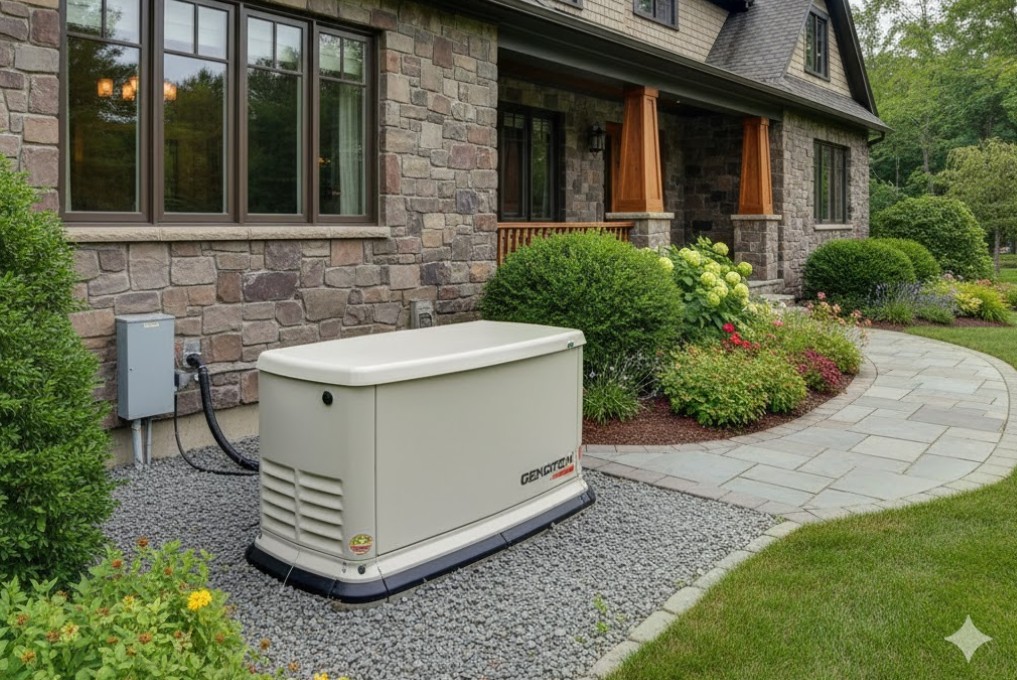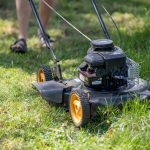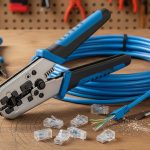A reliable power source during an outage is a true necessity, offering comfort and security. However, the convenience of a generator comes with a serious responsibility. Mismanagement can lead to dangerous situations like carbon monoxide poisoning, electrocution, or fire. This extensive guide is dedicated to providing you with the real-world, actionable knowledge you need to master how to safely operate a generator in your home, ensuring your family and property remain protected.

Why Safety is the Ultimate Priority When Operating a Home Generator
When the lights go out, the hum of a generator can sound like music. But that hum is a reminder of the powerful machinery you are engaging with. Simply put, operating a generator requires diligence and strict adherence to safety protocols—there are no shortcuts. Every year, tragic accidents occur because basic safety rules are ignored. Understanding the fundamental risks is the first step toward effective mitigation.
The Silent Killer: Carbon Monoxide (CO) Poisoning
Perhaps the single greatest danger associated with portable generators is Carbon Monoxide (CO). This invisible, odorless gas is a byproduct of combustion and can be deadly in minutes. The exhaust from a generator contains high concentrations of CO, which is why placement is absolutely critical—a point we will revisit in depth.
For context, the U.S. Consumer Product Safety Commission (CPSC) reports hundreds of non-fire carbon monoxide deaths annually, with portable generators being a leading cause. Crucially, simply opening a garage door or having a window open is not enough to prevent CO buildup. The gas can quickly permeate walls and doors, making it lethal even if the generator is placed ‘near’ a home opening. Therefore, an essential safety measure is the installation and routine testing of battery-operated CO alarms in your home, especially near sleeping areas. These devices are your final line of defense against this pervasive threat.
The silent killer, Carbon Monoxide, deserves further elaboration because the margin for error is non-existent. CO is produced when carbon-based fuels like gasoline, propane, natural gas, or wood burn, especially under conditions where oxygen is limited (incomplete combustion). This gas displaces oxygen in the bloodstream, leading to suffocation at a cellular level. Symptoms can often be mistaken for the flu—headache, nausea, dizziness—making it all the more insidious. Moreover, when a portable generator runs, it can produce the same amount of CO as hundreds of cars idling, meaning fatal concentrations can be reached in confined or partially enclosed spaces in mere minutes.
Beyond the 20-foot outdoor rule, a new generation of CO alarms is emerging: those specifically designed to detect the lower levels of CO exposure associated with generator use. Look for models that use electrochemical sensors and meet the latest UL (Underwriters Laboratories) standards. Placing these at different levels (near the ceiling and near the floor) is also a good practice, as CO is slightly lighter than air at room temperature but often mixes readily with air currents.
The Electrical Hazard: Preventing Backfeed and Electrocution
Another major risk is electrical backfeed, often referred to as ‘suicide cords.’ This happens when a generator is improperly connected directly to a home’s wiring without a proper transfer switch. When this occurs, the generator can send power back through the utility lines. This endangers utility workers who may be repairing lines, believing them to be de-energized, leading to severe injury or death. Furthermore, backfeed can cause devastating electrical fires within your home and damage your generator itself.
Let’s dive deeper into the necessity of the transfer switch. When a utility worker sees the lights turn on in your home during an area-wide outage, it suggests the line they are working on is energized, potentially by an illegal or improper connection from your generator. Backfeed can carry thousands of volts, instantaneously killing a lineman. This is why it is not just a personal safety issue, but a moral and legal one. In essence, the transfer switch is a simple yet profound safeguard: it ensures your home is connected to either the utility grid or the generator, but never both simultaneously.
The Fire Risk: Fuel and Heat
Generators operate on flammable fuels, typically gasoline or propane, and produce significant heat during operation. Storing fuel improperly, refueling a hot generator, or placing the unit near flammable materials can quickly turn a power backup plan into a raging fire. Consequently, handling fuel and managing the generator’s heat are key components of safe operation.
Phase 1: Essential Pre-Operation Setup and Safety Checks
Before you ever pull the starter cord, a comprehensive setup process must be followed. This preparatory phase is where most safety hazards are eliminated.
Placement is Non-Negotiable: The CO Zone of Safety
The single most important rule for generator operation is outdoor use only. There is no exception to this rule. A generator must be placed:
- At least 20 feet (approx. 6 meters) away from your home, doors, windows, and air vents.
- In an area where the exhaust is directed away from all residential structures.
- Under an open, canopy-like structure (optional, but recommended for rain protection) that does not restrict airflow. Never operate it in a carport, garage, shed, or basement.
Additionally, ensure the generator is placed on a flat, dry, and stable surface to prevent it from tipping over, which could cause fuel spillage or damage to the unit. The exhaust vents must be completely unobstructed.
The Right Connection: Why a Transfer Switch is Key
For a seamless and safe connection to your home’s main electrical system, you absolutely must use an approved manual or automatic transfer switch. A transfer switch is a device installed by a licensed electrician that essentially acts as a gatekeeper, safely isolating your home’s electrical system from the utility grid before connecting the generator. This completely eliminates the risk of backfeed.
There are two main types of transfer switches:
- Manual Transfer Switch (MTS): This requires a person to physically flip a switch to disconnect from the grid and connect to the generator. It’s cost-effective and very safe when operated correctly.
- Automatic Transfer Switch (ATS): This is typically used with whole-house generators. It detects a power outage, automatically starts the generator, switches the home’s load to the generator, and then reverses the process when utility power is restored.
Alternatively, if you are using a portable generator and only powering a few small items, you should use heavy-duty, outdoor-rated extension cords (the correct gauge for the load) to plug appliances directly into the generator’s outlets. However, you must still avoid running these cords through open doorways or windows, as this is another entry point for CO. If you opt for the simpler method, you must still maintain strict discipline. Consequently, you must route the heavy-duty cords through an area that is not an entry point for CO, such as under a garage door that is slightly ajar (but sealed with a temporary foam barrier), or through a secured hatch. Crucially, using undersized extension cords is a major fire risk. A 16-gauge cord for a refrigerator will overheat rapidly. Always match the cord gauge (the lower the number, the thicker and safer the cord) to the appliance’s wattage and the length of the run. Consult a load chart or your generator manual.
If you’re looking for a more permanent power solution that handles the entire house without the need for manual connection, consider exploring whole house generators, which often integrate a transfer switch seamlessly.
Fuel Safety and Storage
Fuel is the lifeblood of your generator, but it is also a major fire hazard. Always adhere to these guidelines:
- Store fuel in approved, clearly marked containers away from the generator, your home, and any ignition sources (pilot lights, water heaters, etc.).
- Never store fuel indoors, including in basements or attached garages. A detached shed is the preferred location.
- Purchase the correct fuel type and use fuel stabilizer if you plan to store it for more than a few months. Check your generator’s manual for specific fuel requirements.
- Keep a fire extinguisher (rated ABC) close by and ensure everyone in the household knows where it is and how to use it.
Before starting the generator, check the fuel level and the oil level, topping them up as needed. Running a generator without sufficient oil can permanently damage the engine.
Phase 2: Starting, Operating, and Monitoring the Generator Safely
With the setup complete, you can now move to the actual operation phase. These steps ensure the engine runs efficiently and that you maintain safe conditions throughout the outage.
The Proper Start-Up Sequence
Always refer to your specific model’s manual, but the general start-up process is:
- Turn off or unplug all appliances and devices that will be connected to the generator.
- Turn the generator’s main circuit breaker to the ‘OFF’ position.
- Start the generator (using the pull cord or electric start). Allow the engine to run for a few minutes to warm up.
- Once the generator is running smoothly, move the transfer switch (if installed) to the ‘GENERATOR’ position.
- Now, you can flip the generator’s main circuit breaker to ‘ON’ and begin plugging in appliances or turning on household circuits one by one. This staggered approach prevents an overload surge.
Remember, never start the generator with a load already connected to it, as this can strain the engine and shorten its life.
Load Management and Avoiding Overload
Generators have a limited power capacity. Overloading the unit is dangerous, potentially causing the circuit breakers to trip repeatedly and, in the worst case, leading to fire or permanent generator damage. To operate your generator safely, you must practice effective load management.
Begin by prioritizing only essential appliances: the refrigerator/freezer, necessary lighting, the furnace fan, and medical equipment. Appliances with heating elements (electric stoves, water heaters, central AC units) draw massive amounts of power and are typically unsuitable for most portable generators.
To accurately calculate the power (wattage) needs of your essential appliances, use a reliable tool like this Power Calculator. Understanding your starting watts (the brief surge needed to start motors) and running watts is crucial for selecting the right generator and preventing overload.
The practice of load management extends beyond simply calculating watts; it is about protecting the quality of power your appliances receive. Generators produce AC (Alternating Current) power at a specified frequency (usually 60 Hz). Fluctuations in the load—quickly connecting or disconnecting a high-wattage item—can cause the frequency and voltage to spike or dip. These variations, especially ‘dirty power,’ can damage sensitive modern electronics, like computers, smart TVs, and routers. Therefore, if you plan to power electronics, consider using an inverter generator, which produces ‘cleaner’ sine wave power, or connect your electronics to a high-quality surge protector connected to the generator circuit.
Furthermore, never exceed the generator’s rated continuous run time. Most air-cooled portable generators are not designed to run for days on end without a break. They need periodic cool-down periods to prevent premature wear and overheating. Consult your manual for the recommended run-to-rest cycle. This discipline ensures the longevity and safe performance of your investment.
Refueling Safely and Engine Care
Running out of fuel in the middle of a storm is inconvenient, but refueling a hot generator is a major fire hazard. The gasoline fumes can easily ignite upon contact with a hot engine component or muffler.
- Always turn the generator OFF and allow it to cool completely—at least 15-20 minutes—before adding fuel.
- Use a funnel and ensure you never refuel in the dark. Use a flashlight, never an open flame or lighter.
- Clean up any spilled fuel immediately and dispose of rags safely.
- For propane generators, ensure the connection is tight and check the hose for any damage before use. Propane is generally safer to refuel, but the tank itself must be secured and kept far from the generator’s exhaust.
Continuous monitoring of the unit’s performance, including voltage and frequency if your generator has those gauges, is essential to ensure it is delivering stable power. Inconsistent power can damage sensitive electronics.
Phase 3: Shut-Down, Storage, and Long-Term Preparedness
The safety process doesn’t end when the power returns; proper shut-down and maintenance are just as important for protecting your investment and ensuring it’s ready for the next emergency.
The Safe Shutdown Sequence
To prevent carburetor damage and ensure a clean stop:
- Turn off and unplug all connected appliances and circuits.
- Turn the generator’s main circuit breaker to the ‘OFF’ position.
- Move the transfer switch (if used) back to the ‘UTILITY’ position.
- Allow the generator to run for a few minutes with no load to cool down the engine gradually.
- Turn the engine off using the ignition switch or fuel shut-off valve.
If you anticipate storing the generator for an extended period (more than 30 days), it is advisable to run the engine until the fuel tank is empty to prevent stale gasoline from clogging the carburetor. Alternatively, use a high-quality fuel stabilizer before storage.
Maintenance for Reliability
A well-maintained generator is a safer generator. Regular upkeep is crucial for flawless performance when you need it most. This includes:
- Oil Changes: Follow the manual’s schedule (often after the first 20-30 hours, then every 50-100 hours thereafter).
- Air and Fuel Filter Checks: Replace these regularly to ensure clean fuel and air mixture, which improves efficiency and reduces dangerous emissions.
- Battery Check (for electric start models): Ensure the battery is charged and terminals are free of corrosion.
- Running it Monthly: Even when not in use, run the generator under a moderate load for 15-30 minutes every month to keep the carburetor clean, lubricate the seals, and ensure it will start when an emergency hits.
Long-term maintenance is often the most overlooked aspect of generator ownership. The most common reason a generator fails to start during a power outage is old, degraded fuel. Gasoline breaks down over time, forming a gummy residue that clogs the carburetor and fuel lines. Even stabilized gasoline should typically not be stored for more than 6-12 months.
To ensure peak readiness, adopt a seasonal maintenance checklist:
- Spring Check (Post-Winter): Change the oil, replace the spark plug, and ensure the battery is charged. If you stored fuel, dispose of the old fuel properly and replenish the supply.
- Fall Check (Pre-Storm Season): Run the unit under a half-load for a full hour. Inspect the tires (for wheeled models) and all electrical connections and cords for signs of wear, cracking, or rodent damage. Significantly, ensuring your winter fuel is stabilized now will save you a headache later.
- Monthly Check (Year-Round): Start the unit and let it run for 15-30 minutes with a small load connected (e.g., a few lights). This cycles the fuel and lubricates internal components, preventing seals from drying out.
In fact, many safety-related failures (like starting issues during a storm) can be traced back to poor maintenance, so treat your generator care seriously. In addition, remember to always use the manufacturer-recommended oil type and weight. The wrong viscosity can lead to overheating and poor performance, directly impacting the safety and reliability of the engine.
Considering Cleaner Alternatives for Home Backup
While traditional generators are powerful, some people are now looking toward cleaner, quieter, and potentially safer alternatives that eliminate the CO risk and fuel storage issues. For instance, many homeowners are investing in best solar generators for home backup, which convert sunlight into stored electrical energy. These units can be operated indoors, eliminating the placement dilemma, though they are often limited in total output compared to a robust gasoline generator. Furthermore, because they rely on batteries and inverters rather than combustion engines, they require virtually zero fuel storage and significantly less mechanical maintenance, trading engine upkeep for battery health management.
Phase 4: Common Mistakes to Absolutely Avoid
Being aware of the most frequent generator usage errors can save lives and prevent significant damage.
The Deadly Sins of Generator Operation
- Operating Indoors: Never, under any circumstances, run a generator in a garage, basement, or enclosed space. We cannot stress the danger of carbon monoxide enough.
- “Backfeeding” Electricity: Never plug the generator into a wall outlet. This is what causes backfeed and endangers utility workers. Use a transfer switch or approved extension cords only.
- Overloading the Generator: Trying to power too many items or high-wattage appliances simultaneously. Know your generator’s capacity (starting and running watts) and stay below 80% of its maximum continuous load.
- Refueling While Running: Always shut the unit down and allow it to cool for at least 15 minutes before adding fuel.
- Using Light-Duty Cords: Using cords that are too thin (high gauge number) for the distance or the load can cause the cord to overheat and start a fire. Use heavy-gauge, outdoor-rated extension cords (e.g., 10- or 12-gauge).
The Importance of Planning and Documentation
A sudden power outage is not the time to read the manual. Therefore, preparation is a huge part of safety. Create a checklist of all steps, from pulling the generator out to powering the first appliance. Keep this checklist—along with your owner’s manual, a generator service log, and the phone number for an emergency electrician—in a clearly labeled, waterproof container near the generator’s storage location. This ensures that every person authorized to operate the generator knows the exact, safe procedure.
Furthermore, ensure your home has working smoke alarms and, critically, multiple CO alarms placed strategically throughout the living space. Test them monthly! This simple act of preparation is a crucial safety buffer.
Phase 5: Advanced Safety Considerations and Weather Preparedness
Operating a generator often occurs during challenging weather conditions—heavy rain, snow, or wind. These elements introduce additional layers of risk that must be addressed.
Operating in Wet Conditions
Water and electricity are a deadly mix. Never operate a generator standing in water, rain, or snow. The generator must be protected from the elements, but this protection cannot compromise the necessary ventilation.
- Use an approved, open-sided generator cover or build a three-sided, roofed enclosure specifically designed to shelter the unit from precipitation while allowing maximum airflow. The exhaust must always be vented outward, away from all structures.
- Ensure your hands are dry when handling electrical components, plugs, or cords.
- Keep extension cord connections elevated off the ground to prevent them from sitting in puddles.
Many generator manufacturers now offer specialized canopies that meet safety and ventilation standards, simplifying the process of ensuring proper shelter without causing CO buildup.
Grounding and Professional Installation
A crucial and often misunderstood safety requirement is grounding the generator. While modern portable generators with a properly bonded neutral (check your manual) can often operate safely without a separate grounding rod, most older or contractor-grade models require a physical grounding to prevent electrical shock. Generally, if the generator is connected to your home via a transfer switch, it should be grounded through your home’s grounding system. However, if you are running extension cords, you may need to drive a grounding rod into the earth and connect it to the generator’s frame ground terminal with a heavy-gauge wire.
Always consult the manufacturer’s instructions and local electrical codes regarding grounding. When in doubt, call a licensed electrician. Trying to bypass the grounding requirement is a direct shortcut to electrocution risk, especially in wet or humid conditions.
Noise Pollution and Neighborly Courtesy
While not a direct physical safety hazard, the noise produced by a generator can be a significant issue. Many communities have noise ordinances, and being a good neighbor is important, especially during a crisis.
- Aim the exhaust muffler away from your neighbors’ homes.
- Operate the generator only during reasonable hours if possible, though emergencies take priority.
- Consider a quieter model for future purchases. Some newer inverter generators, including solar units, run at much lower decibel levels.
This consideration contributes to the overall peace and safety of your community during a stressful outage.
Personal Protective Equipment (PPE)
When starting or performing maintenance, it is wise to use basic PPE. For example, safety glasses can protect your eyes from debris when starting a pull-cord generator, and heavy gloves can protect your hands from heat and abrasions. Ear protection is also strongly recommended, as the sustained noise of a generator can damage hearing over time, particularly for those operating it for extended periods.
Final Thoughts
To truly master how to safely operate a generator in your home, always remember these five principles:
- Placement: Outdoor Use ONLY, at least 20 feet from your home, with the exhaust pointing away.
- CO Monitoring: Install and test Carbon Monoxide alarms near all sleeping areas.
- Electrical Connection: Use a Transfer Switch or heavy-duty, proper-gauge extension cords. NEVER backfeed into a wall outlet.
- Fuel: Turn OFF and cool the generator before refueling. Store fuel safely and outdoors.
- Maintenance: Follow the service schedule and run the unit monthly to ensure it starts when the emergency happens.
Ultimately, a generator is a powerful tool designed to provide a critical service during a vulnerable time. By treating it with the respect it demands and following these comprehensive safety procedures, you are doing more than just keeping the lights on—you are actively protecting the well-being and security of your entire household. Preparation is key, diligence is non-negotiable, and safety is the ultimate reward. Take the time to plan, prepare, and practice, and you will ensure that your generator is a source of relief, not risk.
Amranul is a highly experienced product review writer with a passion for helping readers make smart, informed purchasing decisions. Since 2018, he has specialized in thoroughly researching and analyzing a wide range of products to deliver honest, in-depth reviews. Amranul combines technical accuracy with clear, engaging writing to break down complex product features and highlight true user value. Look for his reviews to find reliable information and expert insights you can trust before you buy!





